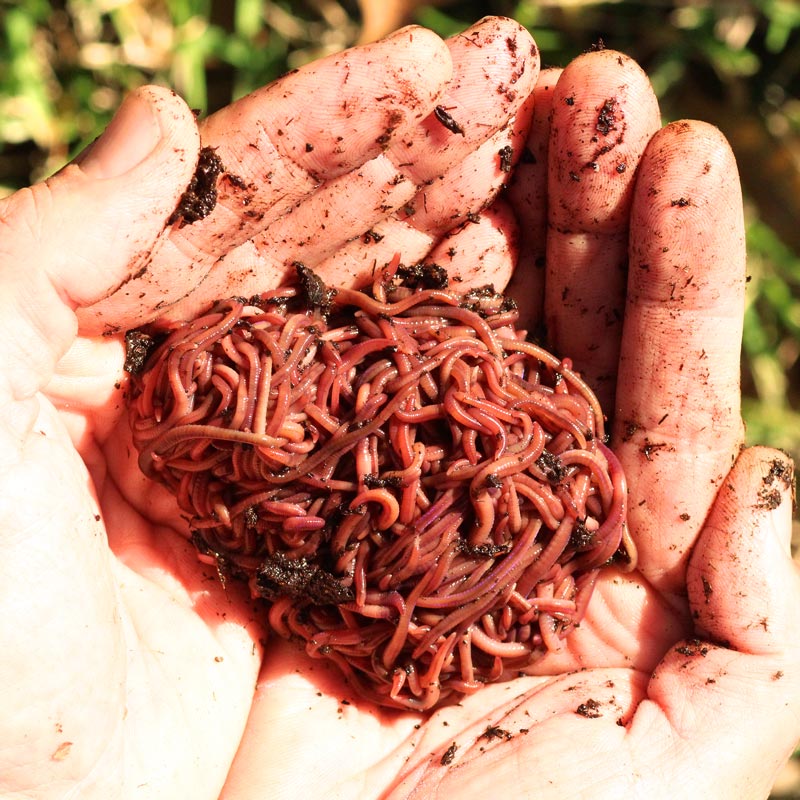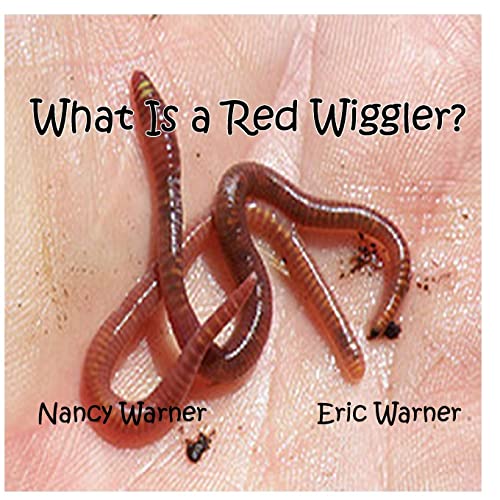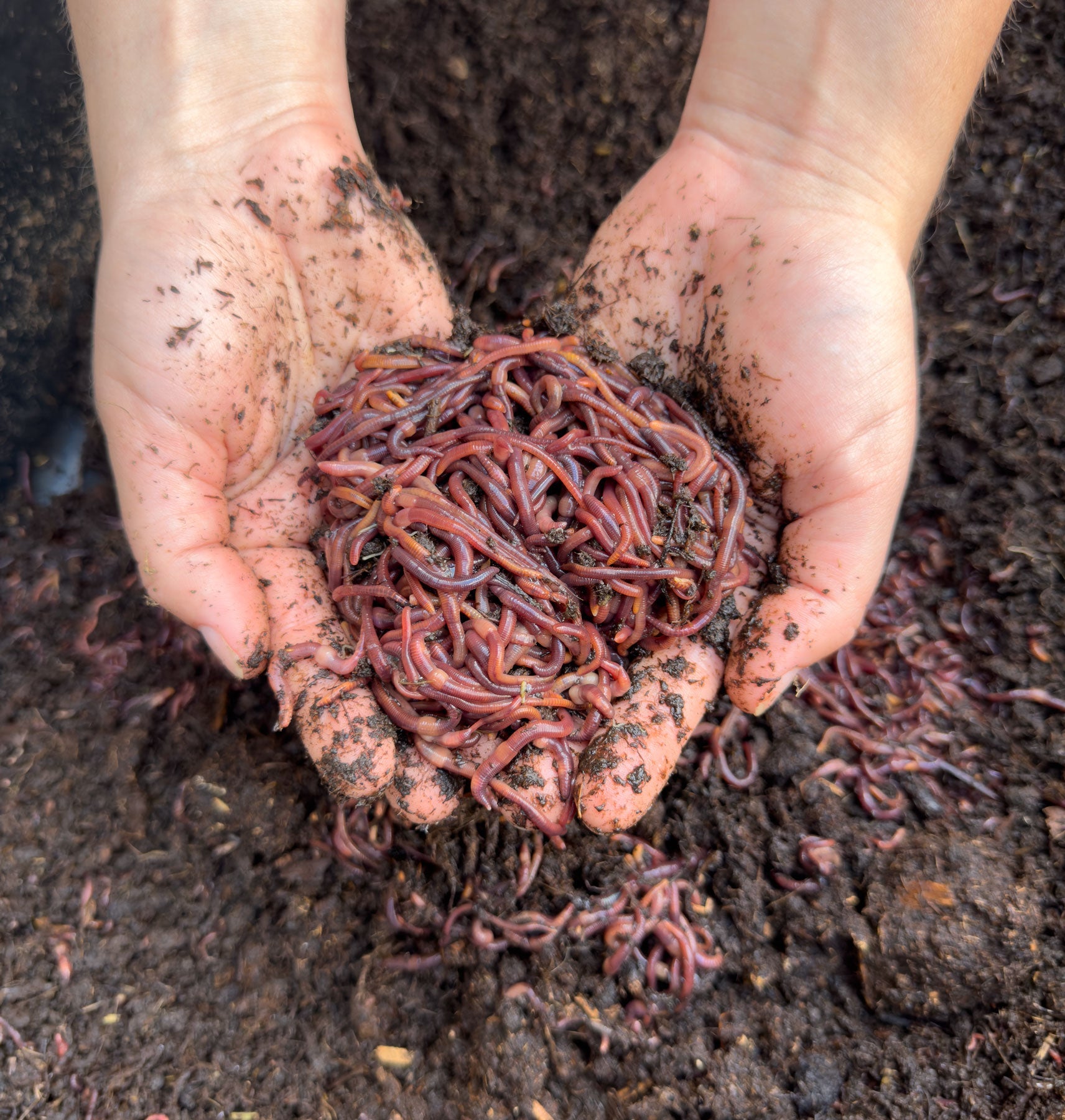Red Wigglers: The Unsung Heroes of Organic Waste Recycling
Red wigglers, or Eisenia fetida, serve as critical representatives in the organic waste recycling process, changing disposed of products right into valuable vermicompost. As the globe progressively looks for solutions to combat waste accumulation and improve agricultural efficiency, recognizing the role of these worms ends up being necessary.
What Are Red Wigglers?
The remarkable resilience of red wigglers, clinically known as Eisenia fetida, emphasizes their important role in natural waste recycling. These tiny, reddish-brown earthworms are normally discovered in decomposing raw material, such as compost heaps and manure stacks. Lake Hickory Bait. Unlike various other earthworm varieties, red wigglers flourish in nutrient-rich settings and are extremely reliable at damaging down organic products, making them necessary for vermicomposting

(Red Wiggler Express)In addition to their duty in waste reduction, red wigglers contribute to soil health by boosting dirt framework and oygenation via their delving tasks (Lake Hickory Bait). Their existence in composting systems not only boosts decomposition rates but also promotes a lasting technique to throw away management, showing their value in ecological conservation initiatives
Advantages of Composting With Worms
Composting with worms, specifically red wigglers, supplies numerous advantages that enhance both waste administration and soil wellness. These worms efficiently damage down natural waste, transforming it into nutrient-rich vermicompost that enhances soil. This procedure accelerates decay, enabling a much faster recycling of kitchen scraps and other organic products compared to traditional composting techniques.
In addition, the vermicompost created by red wigglers is teeming with helpful bacteria, which aid enhance soil structure, aeration, and dampness retention. This boosts the general wellness of plants, advertising strenuous development and boosted yields in yards and agricultural settings. The use of worms in composting decreases the production of greenhouse gases, such as methane, contributing to an extra lasting waste management system.

How to Begin Vermicomposting
Developing a vermicomposting system is an uncomplicated process that can yield substantial benefits for both waste management and dirt enrichment. To start, select a suitable container, such as a plastic container or wood box, with adequate air flow openings to make certain appropriate air movement. The measurements need to preferably be about 2 feet by 3 feet, allowing sufficient space for the worms to prosper.
Next, prepare bed linens product, which can consist of shredded newspaper, cardboard, or coconut coir. This bedding must be dampened to produce a suitable environment for the Red Wiggler Express worms. As soon as the bed linens is in area, present red wigglers (Eisenia fetida) into the container, commonly around one pound of worms for every single square foot of surface area.
Adhering to the positioning of worms, add organic waste, such as fruit and vegetable scraps, coffee premises, and smashed eggshells. With these steps, you will successfully start a vermicomposting system that contributes to lasting waste administration and enhances your dirt.
Maintaining a Healthy Worm Bin
(Red Wiggler Express)Keeping a worm container growing calls for normal interest and like ensure the health and wellness of the red wigglers and the effectiveness of the composting procedure. Correct maintenance begins with monitoring the wetness degrees; the container needs to perspire however not soaked. A good general rule is to maintain an uniformity similar to a wrung-out sponge.
Delicately mixing the bed linens and food scraps every couple of weeks prevents compaction and ensures that all worms have accessibility to oxygen. In addition, it is essential to feed the worms suitably.
If the container ends up being as well hot or cold, the worms might become worried. By faithfully handling these elements, one can keep a durable and productive worm bin.
Influence On Lasting Living
The effective maintenance of a worm container not only profits the health and wellness of red wigglers however additionally adds considerably to sustainable living practices. By recycling natural waste, such as kitchen scraps and yard particles, red wigglers help draw away considerable quantities of product from garbage dumps. This reduction in waste not just decreases greenhouse gas discharges but also lessens the environmental burden associated with waste management.
Moreover, the castings produced by red wigglers function as a nutrient-rich organic fertilizer, improving dirt health and advertising plant development. This all-natural choice to chemical fertilizers supports sustainable agriculture and horticulture practices, reducing reliance on synthetic inputs that can hurt ecological communities. Additionally, worm composting cultivates understanding of waste management, motivating individuals and communities to embrace more sustainable practices.

Verdict
In recap, red wigglers serve as essential contributors to organic waste reusing through their reliable decomposition of organic products. By integrating vermicomposting right into waste administration strategies, people and communities can substantially minimize waste while promoting ecological sustainability.